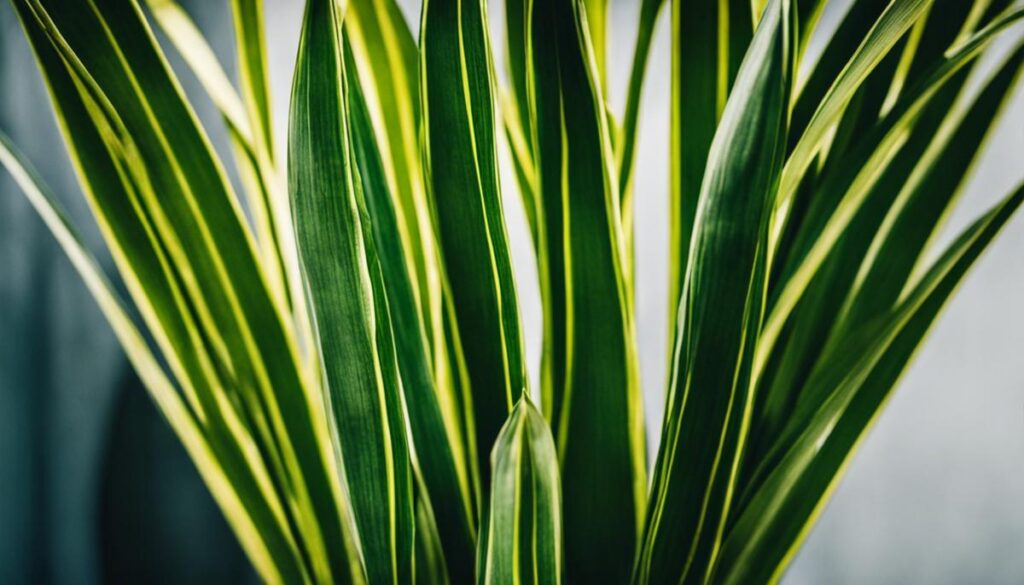Regardless of whether you’re an experienced horticulturist or just dipping your toes into the waters of indoor gardening, choosing the right plant to adorn your living space can be quite a task.
Luckily, there are several indoor plants that are not only lovely to look at, but also resilient and require minimal effort to care for. These plants are perfect for novices that wish to beautify their homes with greenery while enhancing the quality of the indoor air. This article will explore a range of hassle-free houseplants ideal for beginners, from the enduring Snake Plant to the elegant Peace Lily.
Snake Plant

Meet the Indestructible Snake Plant
Snake Plant, also known by the tongue-in-cheek name Mother-in-Law’s Tongue, is a fantastic choice for those who are new to plant ownership or simply don’t have a green thumb. This robust plant can withstand a variety of conditions, making it almost indestructible.
Overlooked watering schedule? Low light? No problem. The Snake Plant can tolerate considerable neglect and can flourish in low light conditions, which makes it flexible enough to be placed in nearly any room of your home.
Canonically known for its unique upright growth pattern, the Snake Plant adds an architectural element to your home decor. It’s a simple yet effective way to enliven your space, and serves as an excellent conversation starter due to its unique shape.
Beyond its aesthetic value, the Snake Plant doubles as a natural air purifier. According to studies conducted by NASA, it’s one of the best houseplants for removing toxins like formaldehyde, xylene, and benzene from the air.
Whether you lack the time or skills to care for a more demanding plant, the Snake Plant offers a virtually fail-safe option. Plus, with benefits to your air quality and home decor, this hardy indoor plant proves you don’t have to be a green thumb to introduce a touch of nature into your living space.
House Plant Essentials
Pothos
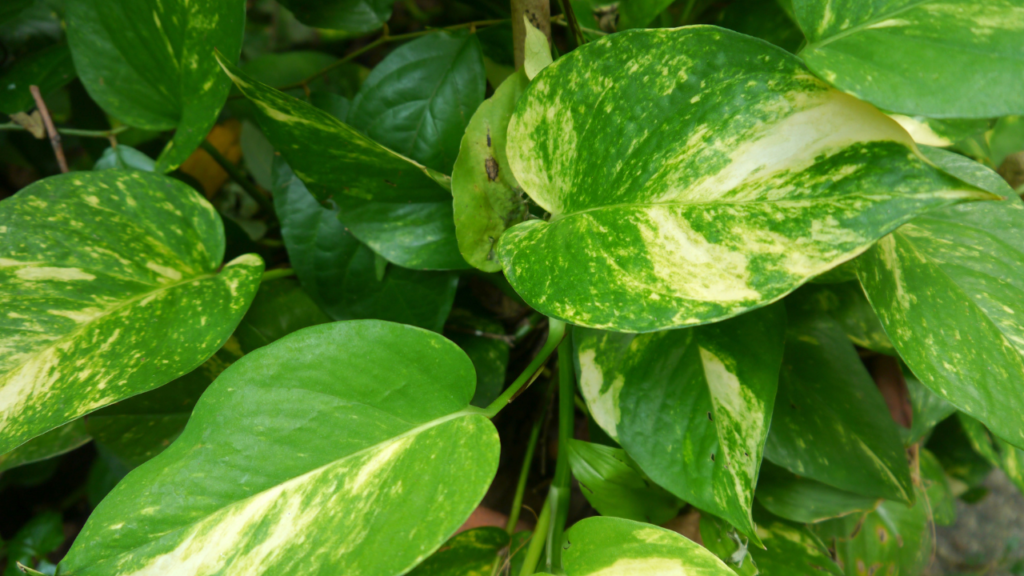
Pothos: Your New Green Buddy
With its graceful trailing vines and elegantly heart-shaped leaves, Pothos, also known as Devil’s Ivy, emerges as a stunning addition to any indoor space. Perfect for those unacquainted with keeping houseplants, this plant has earned its popularity due to its hardiness and resilience. Unlike other houseplants requiring extensive care, Pothos easily adapts to your busy schedule and doesn’t mind occasional neglect.
Shining, Even in the Shade
Pothos is notably flexible when it comes to its light preferences. Though it is partial to bright, indirect light, it’s not uncommon to see a Pothos thriving in low-light conditions, or under fluorescent lights in offices. So, whether you’ve got a sunny window sill or a dingy corner, your Pothos is sure to stay bright and lively.
Mirror Mirror on the Wall, Who’s the Purest of them All?
Aside from its aesthetic appeal, Pothos might just become your best friend if you’re health-conscious. This plant is celebrated for its air-purifying abilities. It effectively removes toxins like benzene, toluene, and xylene from its environment. So, as it adds a splash of lush green to your space, it’s also quietly working to give you cleaner and healthier air to breathe.
Watering: No Fuss, No Rush
Pothos isn’t a diva about hydration. This plant enjoys well-drained soil and prefers to be watered only when the top inch of its soil has dried out. Overwatering can lead to yellow leaves and root rot, so it’s crucial to make sure you’re not drenching your plant. This forgiving nature when it comes to watering frequency makes Pothos an excellent pick for beginners.
Grow, Pothos, Grow
Not only is Pothos hardy and tolerant, but it also exhibits quick growth. It’s a joy to see your plant rapidly shooting out new stems and leaves, showing its health and happiness visibly. Enrich your home or office today with a Pothos. You can sit back, relax, and watch as this beginner-friendly houseplant transforms your indoor space into a green paradise.
ZZ Plant

A Rugged Survivor: The ZZ Plant
One of the most forgiving indoor plants for novices is the ZZ Plant. Known for its low maintenance nature, the ZZ Plant is great for anyone dipping their toe into indoor gardening for the first time. This hardy houseplant can endure limited light exposure and neglect, yet still flourish and add aesthetic appeal to your home.
The ZZ Plant, or Zamioculcas zamiifolia, is a resilient species that can handle the most common mistakes that beginners make, such as overwatering or neglecting to water at all. These plants, native to Africa, have evolved to withstand drought and survive in low-light conditions, making them perfect for environments like apartments and office spaces with little to no natural light.
As a word of caution for households with pets, it’s worth noting that the ZZ plant, like many houseplants, can be toxic if ingested. Its resilience to low light doesn’t extend to withstanding curious bites from cats, dogs, or small children. So it’s best kept out of reach from curious mouths.
Even without bright sunlight, the ZZ Plant’s leaves produce a rich, dark green color and a shiny finish, making it a beautiful addition to any space. Each glossy leaf can grow up to 15 cm long and 5 cm wide, making it a stunning statement piece in your home or workspace. Despite its attractive aesthetic, the ZZ Plant asks for very little in return, giving beginners a confidence boost as they begin their indoor plant journey. Not only is the ZZ Plant easy to care for, but it is also a delight to behold, adding a fresh, green vibe to any space.
Whether you’re a busy urban dweller, a forgetful waterer, or just new to indoor gardening, the ZZ Plant can be your ideal option with its low maintenance needs and its striking, glossy aesthetic. It thrives on neglect, making it a must-have for newbies and black thumbs. The ZZ Plant is the perfect first step on your journey into indoor gardening.
Spider Plant
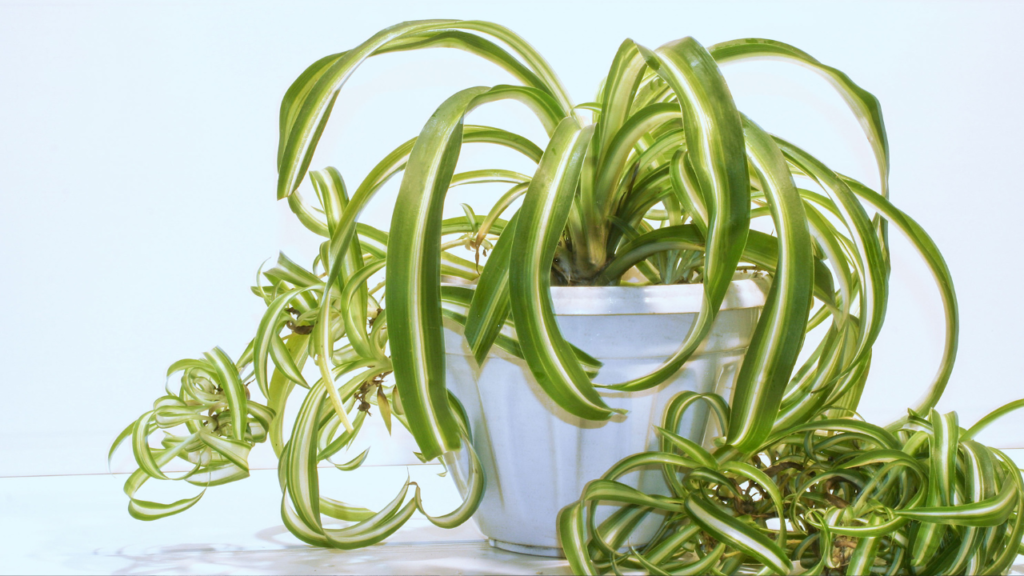
Spider Plant: A Perfect Green Companion For Beginners
The Spider Plant, characterized by its long, green, and white-striped leaves, is an excellent option for first-time plant parents. One of the reasons it has a reputation for being so hard to kill is its robustness in various conditions. Its ability to adapt makes it perfect whether you’re a seasoned green thumb or just starting to flex your plant-care muscles.
You’ll be delighted to discover that the Spider Plant is more than a pretty home decor piece. It’s a new-age superhero with the ability to purify the air in your living space. It has been proved to remove formaldehyde and other common air pollutants, promoting a healthier living environment.
The Spider Plant’s ability to brighten up spaces isn’t limited to high-light areas either. This plant has a surprisingly wide tolerance for various lighting conditions, thriving in anything from bright, indirect light to low-light areas. It’s a versatile addition to any room.
What’s more, if you’re looking to expand your plant family, the Spider Plant has got you covered. Often producing ‘plantlettes’ or offsets, it’s straightforward to propagate and fill your space with greenery. With its easy-going nature and added health benefits, the Spider Plant makes a rewarding addition to any indoor or outdoor garden.
Jade Plant
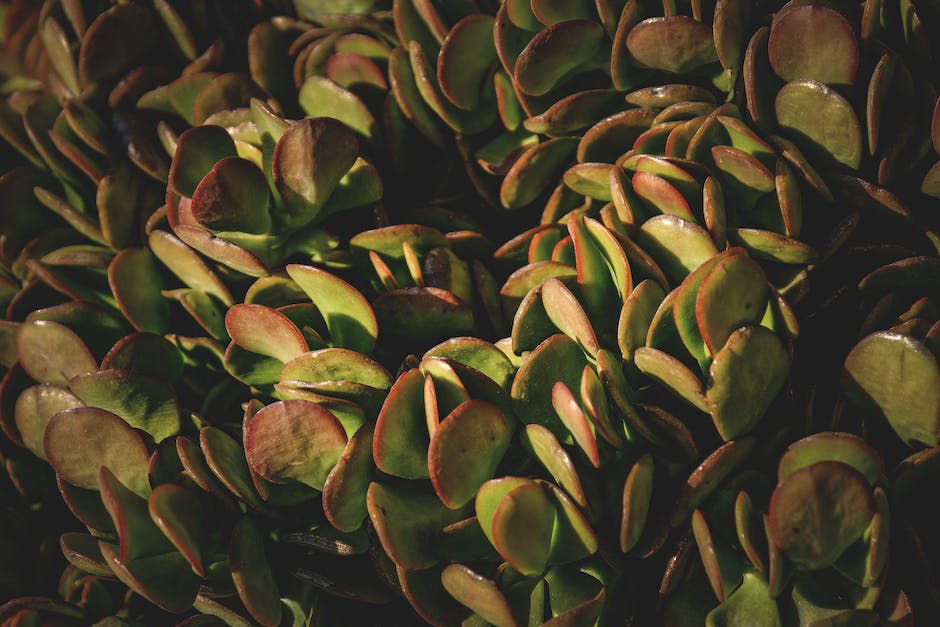
Your Lucky, Low-Maintenance Houseplant: The Jade Plant
The Jade Plant, a type of succulent, is the quintessential houseplant for beginners to get started with. Its low-maintenance requirements and visually appealing aesthetics make it an excellent addition to any indoor space.
Jade Plants require minimal care
Making them a perfect choice for those who might not have a green thumb. These hardy plants need plenty of sunlight, so placing them near a window that gets lots of natural light is ideal. Make sure the soil is well-drained; overwatering is a surefire way to weaken a Jade Plant’s health. Typically, watering them once every two weeks is sufficient.
Longevity and Robustness
One of the reasons Jade Plants are highly sought after by plant enthusiasts is their longevity and robustness. These plants are known to last for years and are fairly resistant to common plant diseases. Their resiliency makes them an excellent choice for beginners who are still learning about plant care and maintenance.
Cultural Significance
On top of the appeal of their lush green leaves and tree-like structure, Jade Plants carry cultural significance in many parts of the world. They are often seen as symbols of good luck. Some believe that they bring prosperity and positive energy to the households they occupy.
Good Fortune and Charm
Remember, a healthy Jade Plant doesn’t just add a touch of green to your home. It may also bring good fortune your way. So, whether you’re just starting with houseplants or looking to expand your indoor garden, consider the effortless charm of a Jade Plant.
English Ivy

English Ivy: Understated Elegance for Indoor Gardening
Unearth the beauty of an evergreen that looks delicate but, in reality, is a robust climber. The English Ivy, often characterized by its vibrant green coloring and variegated leaves, is a popular choice for indoor gardening. This versatile plant can be styled as a textural accent in hanging baskets or allowed to freely climb up a moss pole or trellis.
English Ivy’s ability to filter airborne toxins is one of its most celebrated qualities. Given its bio-filtration credentials, it’s no surprise that it has become a staple in the houseplant community. According to NASA’s Clean Air Study, English Ivy is among the top indoor plants for improving air quality by absorbing toxins.
Caring for English Ivy is breezy, making it an ideal houseplant for beginners. Despite its preference for cool temperatures, it adapts to a wide range of climates and thrives indoors. Regular misting or setting the plant on a tray of water are ideal ways to maintain moist soil and high humidity.
Light-wise, English Ivy prospers in a variety of conditions, although it loves a spot near a window with plenty of indirect light. Avoid intense direct sunlight, which can scorch the leaves.
Remember that although the Ivy is tough, it appreciates a little TLC. Keep enjoying its cascading tendrils by feeding it balanced liquid fertilizer during the growing season, which generally is from spring to early fall. Once winter sets, taper off on the feeding, allow the plant to rest and resume once spring returns.
In its essence, English Ivy demands minimal effort, throwing back lush foliage and improved air quality. It’s the perfect low maintenance addition to any indoor garden. Imbue your space with its understated elegance and enjoy the many health benefits it offers.
Peace Lily
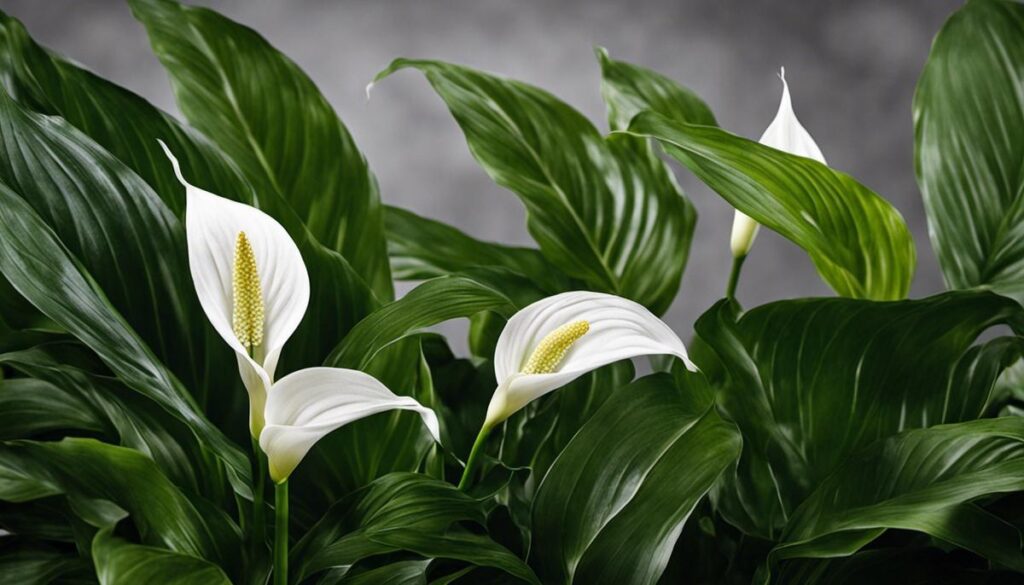
The Nature’s Purifier: The Peace Lily
The Peace Lily is much more than an ordinary houseplant – it’s a silent warrior. Known for its air purifying qualities, it passively absorbs harmful toxins like benzene, formaldehyde, and carbon monoxide from the air. This NASA-approved plant is nature’s own air purifier, making it not just a beautiful addition to your home but also a health-boosting ally.
Humble Light and Moisture Requirements
Caring for a Peace Lily is easy for even the most inexperienced gardeners, a testament to its adaptability. It appreciates medium to low light, so, it’s perfect for those less sunny spots in your home. What about watering, you ask? Well, the answer is actually quite simple: keep the soil moist, but not overly wet.
However, pay attention to your Peace Lily’s leaves. Wilting may mean it’s time for a good soak, but keep in mind that overwatering can cause brown or yellow leaves – no plant likes waterlogged roots, and this lovely lily is no different.
Aesthetically Pleasing and Easy to Care
The Peace Lily is not only versatile in terms of care but also in its aesthetic appeal. Its glossy and vibrant green leaves give your home a splash of year-round freshness. Every now and then, it also graces you with its spectacular white blooms. The simple yet sophisticated look of the Peace Lily can easily complement any style and color scheme in your home.
An Indoor Plant with Multiple Benefits
Besides its air purifying qualities, owning a Peace Lily can be incredibly rewarding in often surprising ways. Since it thrives in a humid environment, it can serve as a natural humidifier, making it great for dry climates or dry winter seasons. A study conducted by the University of Technology, Sydney, Australia also found that having this plant indoors decreases stress, increases productivity and improves concentration – benefits you’d definitely want in your home office or study room.
With its air-purifying capacity, humble care requirements, aesthetic charm and extraordinary benefits, the Peace Lily scales high as an ideal indoor plant for beginners.
Aloe Vera
Aloe Vera: An Easy, Beneficial Houseplant for any Beginner
When it comes to houseplants for beginners, it doesn’t get easier than Aloe Vera. This plant is notorious for its simple care requirements and its therapeutic properties, making it a popular choice for gardening newbies.
For starters, Aloe Vera is a sun-loving succulent that thrives in bright, indirect sunlight. This tough plant can tolerate a range of light levels, but for optimal growth, it should be placed near a sunny window.
A pitching point of Aloe Vera for beginners is its minimal watering needs. Aloe Vera plants prefer their soil to dry out completely between waterings. Overwatering can lead to root rot – a common plant killer. Using a well-draining soil mix can help create the ideal environment for your aloe plant to flourish, preventing water from sitting too long in the soil, which can cause damage to the roots.
Another one of the many perks of growing an Aloe Vera plant is its health benefits. Aloe Vera juice contains many nutrients, including vitamins, minerals, and amino acids, which give it its healing, anticancer, and anti-inflammatory properties. Its gel is commonly used for a variety of skin conditions, including burns, sunburn, frostbite, psoriasis, cold sores, and it may also help the skin recover from general damage.
So, if you’re looking for a low-maintenance, beneficial houseplant, Aloe Vera should surely be on your list.
Rubber Plant

The Resilient Rubber Plant, Perfect for Beginners
Renowned for its wide, gleaming leaves, the Rubber Plant makes an outstanding addition to the home, attracting admirers with a touch of botanical beauty. This evergreen member of the fig family can grow to lengths above your head if maintained well. Yet, it’s more than just a pretty face. The Rubber Plant is seemingly built to thrive, posing a hassle-free way for beginners to set their green thumbs in motion.
Light and Watering: The Sweet Spot for Growth
Lighting and watering play a huge role for the Rubber Plant. Known to thrive in bright, indirect light, it’s crucial to strike a delicate balance. Natural light, filtered through a curtain, often works wonders. Placing it near a north or east-facing window often provides the ideal lighting conditions.
Watering should be a calculated process. Unlike more thirsty houseplants, the Rubber Plant prefers its soil on the drier side. The secret to successful watering is to wait until the top inch of the soil is dry before the next watering. It’s as straightforward as sticking a finger in the soil. If you hit dampness within the first inch, hold off on watering a little longer.
Living Large: Pruning for Size Control
Making a dramatic statement especially in large spaces like living rooms, the Rubber Plant brings a natural depth and character to space. If you’re working with a smaller space or simply prefer a petite plant, never fear—pruning is here! Routine pruning allows you to curate your Rubber Plant’s size while promoting bushier growth. When you trim back the top of the plant, it encourages new branches to sprout further down, keeping your Rubber Plant lush and full.
The Rubber Plant’s striking looks, and easy-care needs make it a great choice for novices. It requires just the right balance of brightness and patience from its caregivers. With a little attention and some pruning, your Rubber Plant can yield rewarding growth and bring a vibrant touch of nature indoors.
Welcome to the world of effortless indoor gardening with the Rubber Plant— a perfect start on your green thumb journey.
Philodendron Green
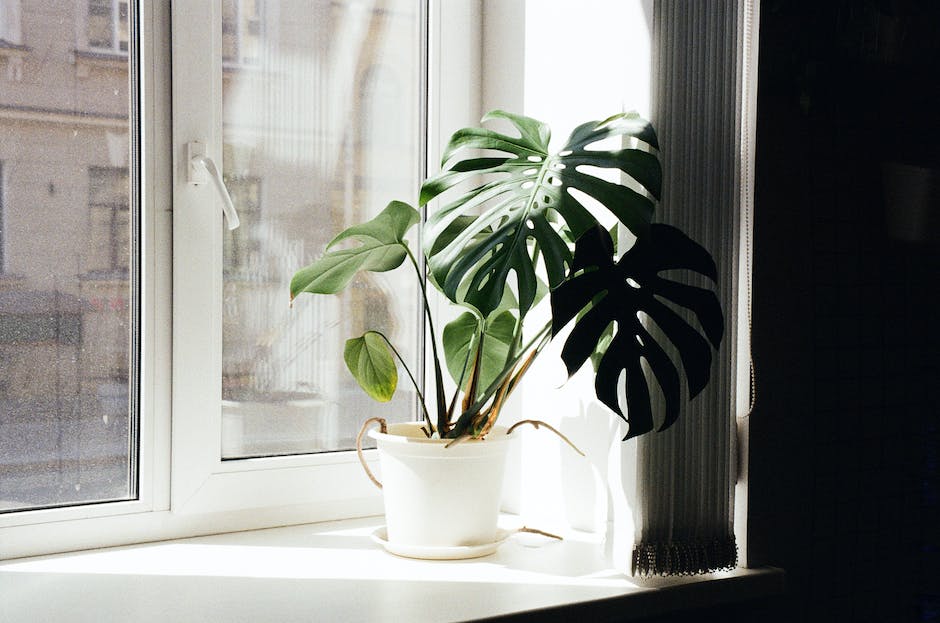
Philodendron Green: A Beginner’s Best Friend
When entering the world of indoor gardening, one plant stands out as an excellent starting point for beginners – the Philodendron Green. This plant is particularly favored by novice green thumbs due to its hardy and adaptable nature.
A significant advantage to starting with a Philodendron Green lies in its light requirements. It thrives in situations with bright, indirect light, making it a perfect fit for locations near windows. However, don’t worry if you don’t have a spot with plentiful natural light. The Philodendron Green is also impressively tolerant of low-light settings making it suitable for virtually any location in your home or office.
Besides its flexibility regarding light, the Philodendron Green is also an excellent choice for those interested in the health benefits of indoor plants. The Philodendron Green is celebrated for its air-purifying qualities. It acts to cleanse the surrounding air of harmful toxins, making it not only a beautiful addition to your space but also a functional one.
Finally, in terms of maintenance, Philodendron Green is a dream plant for beginners. It needs watering only when the top inch of soil dries out, and even if you forget to water it once in a while, it doesn’t hold a grudge. These qualities together make this plant a forgiving option for those who are just starting to develop their plant-care habits.
In summary, for its adaptable light requirements, air-cleaning abilities, and undemanding maintenance needs, the Philodendron Green is a top choice for beginners. Let this plant be your initial step into a rewarding hobby of indoor gardening.
Whether you’re after air-purifying capabilities or simply desire to enhance your home’s aesthetic with a dash of green, these easily manageable houseplants offer a multitude of benefits. As we’ve seen, plants like the Snake Plant, Pothos, and Philodendron Green are particularly hardy and can survive even under a degree of neglect. Additionally, plants like the Peace Lily and English Ivy have added benefits, including air purification. With these options in mind, even the most novice gardener can enjoy the fulfilling process of indoor gardening and the rewards it brings to our homes and lifestyle.
